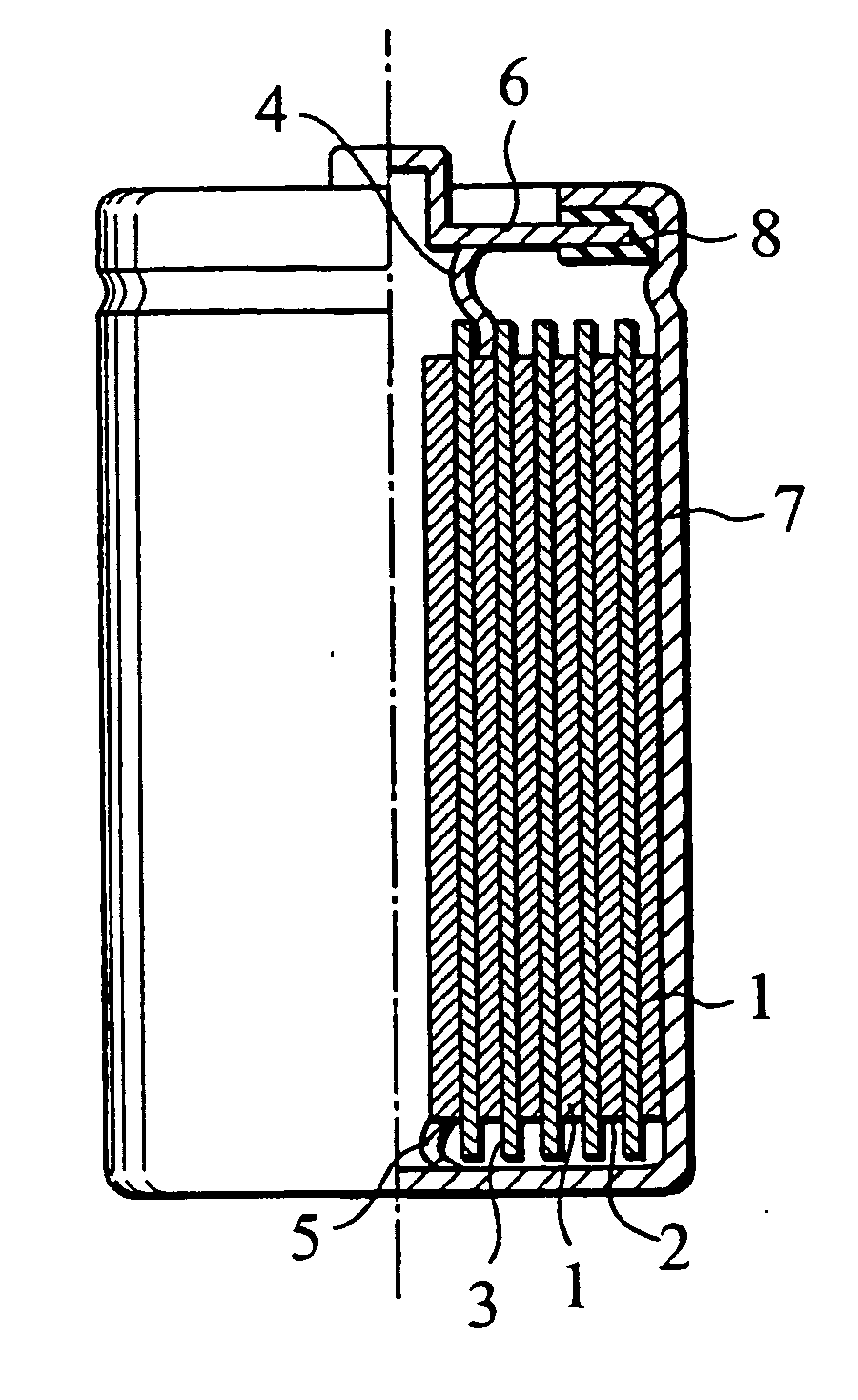Negative electrode for lithium secondary battery and lithium secondary battery
a secondary battery and lithium secondary battery technology, applied in the direction of secondary cell details, cell components, sustainable manufacturing/processing, etc., can solve the problems of deterioration of cycle characteristics, large scaly graphite powder, and high cost, so as to improve cycle characteristics, improve ionic conductivity, and improve the effect of ionic conductivity
- Summary
- Abstract
- Description
- Claims
- Application Information
AI Technical Summary
Benefits of technology
Problems solved by technology
Method used
Image
Examples
example 1
[0069] In the beginning, 50 parts by weight of cokes powder having an average particle diameter of 10 μm and 30 parts by weight of coal tar pitch were mixed at 230° C. for 2 hr. Subsequently, the mixture was pulverized to an average particle diameter of 25 μm. After that, 80 parts by weight of the pulverized material and 20 parts by weight of silicon carbide having an average particle diameter of 25 μm were mixed with a blender, followed by pouring the mixture into a die, further followed by molding with a press machine at 100 MPa to mold into a rectangular parallelepiped body. The molded body was heated at 1000° C. in a nitrogen atmosphere, followed by further heating at 3000° C. in a nitrogen atmosphere, and thereby a molded body of graphite was obtained. The molded body of graphite was pulverized to obtain graphite powders. With the obtained graphite powders, following measurements were carried out. (1) Average particle diameter due to a laser diffraction particle size distributi...
example 2
[0076] Except that pressure of the vertical press machine was set at, instead of 10 MPa, 23 MPa to make the density of the mixture layer of the graphite powder and PVDF 1.45 g / cm3, a test electrode (negative electrode) was prepared according to a method similar to example 1, and a (002) / (110) intensity ratio, a discharge capacity per unit volume, a discharge capacity retention rate after 100 cycles and a discharge capacity retention rate under a discharge current of 6.0 mA / cm2 were measured according to a method similar to example 1. The measurement results are shown together in Table 1.
example 3
[0077] Except that pressure of the vertical press machine was set at 31 MPa to make the density of the mixture layer of the graphite powder and PVDF 1.55 g / cm3, a test electrode (negative electrode) was prepared according to a method similar to example 1, and a (002) / (110) intensity ratio, a discharge capacity per unit volume, a discharge capacity retention rate after 100 cycles and a discharge capacity retention rate under a discharge current of 6.0 mA / cm2 were measured according to a method similar to example 1. The measurement results are shown together in Table 1.
PUM
| Property | Measurement | Unit |
|---|---|---|
| specific surface area | aaaaa | aaaaa |
| crystallite size Lc | aaaaa | aaaaa |
| density | aaaaa | aaaaa |
Abstract
Description
Claims
Application Information
 Login to View More
Login to View More - R&D
- Intellectual Property
- Life Sciences
- Materials
- Tech Scout
- Unparalleled Data Quality
- Higher Quality Content
- 60% Fewer Hallucinations
Browse by: Latest US Patents, China's latest patents, Technical Efficacy Thesaurus, Application Domain, Technology Topic, Popular Technical Reports.
© 2025 PatSnap. All rights reserved.Legal|Privacy policy|Modern Slavery Act Transparency Statement|Sitemap|About US| Contact US: help@patsnap.com


